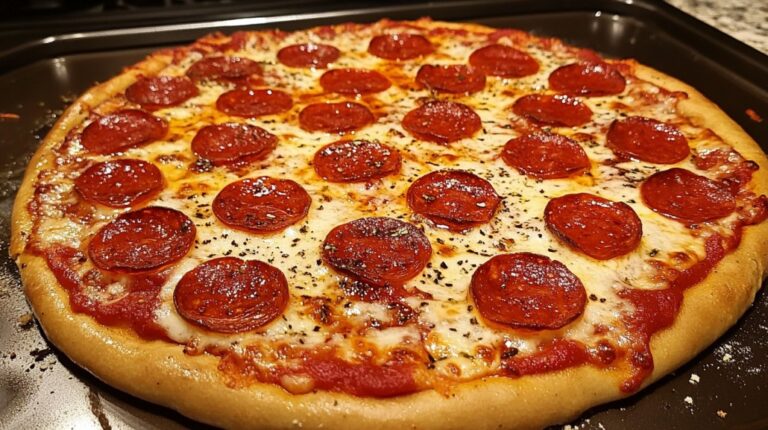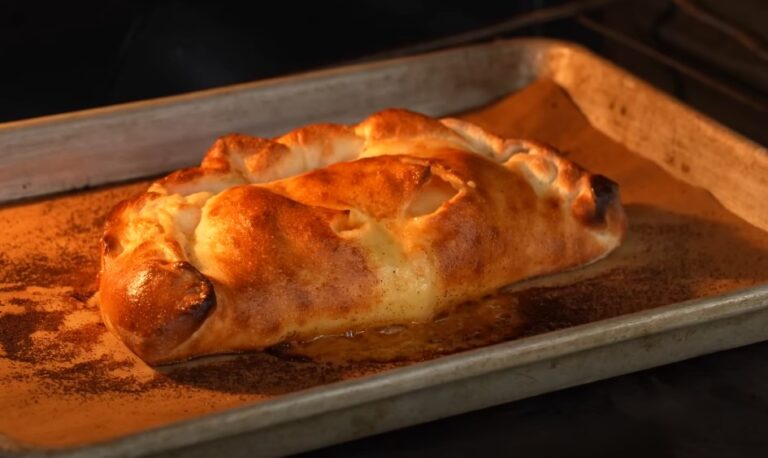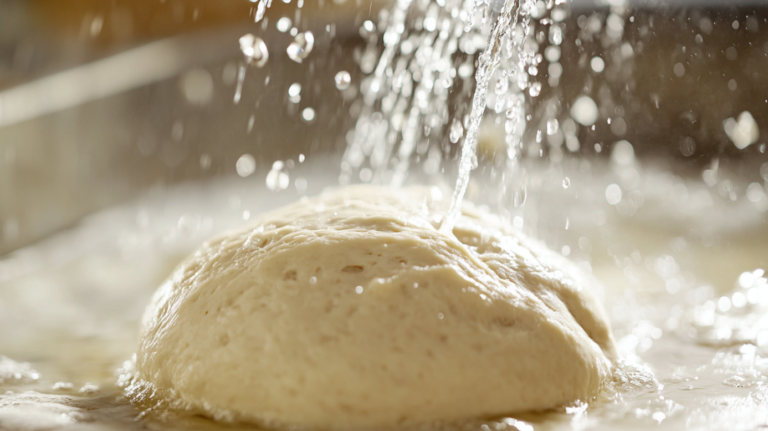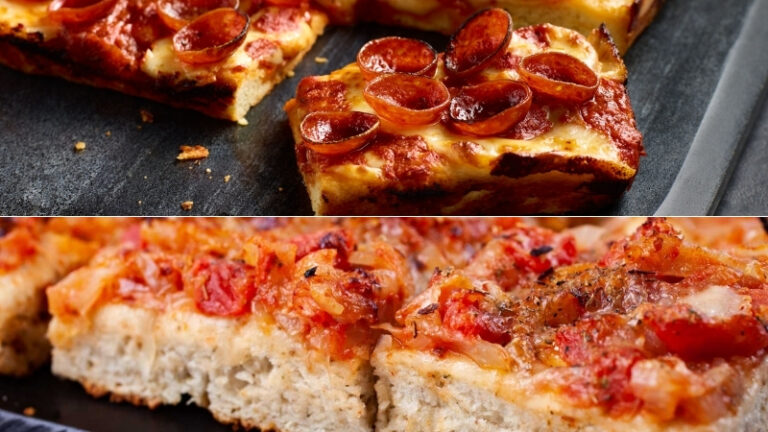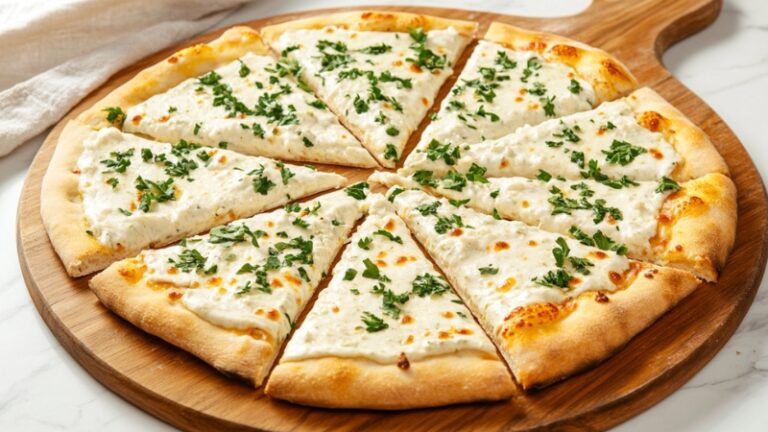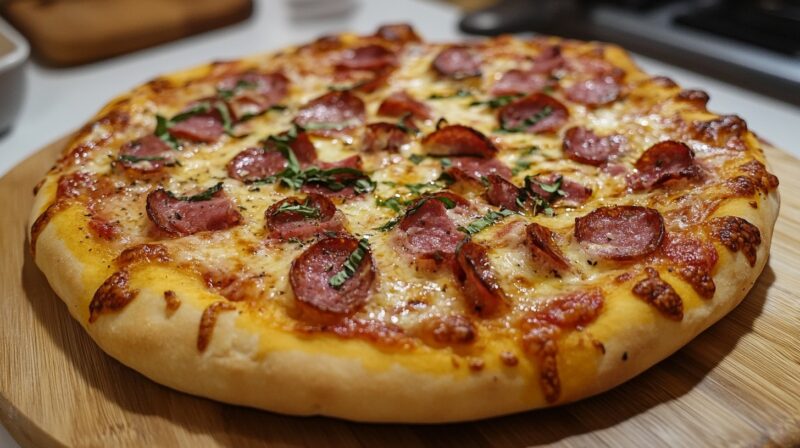Creating homemade gourmet pizza doesn’t have to be complicated or time-consuming. With the right toppings and recipes, you can transform your kitchen into a pizzeria.
Imagine biting into a slice topped with prosciutto, roasted red peppers, and a balsamic glaze—delicious and easy to make at home.
The best pizza toppings can turn a simple dough into a spectacular dish.
From classic options like tomato and basil to creative combinations like Italian salami, apple, and blue cheese, you have endless possibilities.
A standout is the white pizza with bacon, leeks, and cream, offering a rich and satisfying flavor.
Table of Contents
ToggleRecipe

Dough:
- 2 ½ cups all-purpose flour
- 1 tsp salt
- 1 tsp sugar
- 2 ¼ tsp active dry yeast
- 1 cup warm water
- 1 tbsp olive oil
Instructions:
- In a bowl, combine warm water, sugar, and yeast.
- Let it sit for 5 minutes.
- Add olive oil, flour, and salt.
- Mix until a dough forms.
- Knead for 5-7 minutes until smooth.
- Let it rest for 1 hour.
Sauce:
- 1 can (14 oz) fire-roasted tomatoes
- 2 cloves garlic
- 1 tbsp olive oil
- 1 tsp dried oregano
- ½ tsp kosher salt
Instructions:
- Blend all ingredients until smooth.
- Set aside until ready to use.
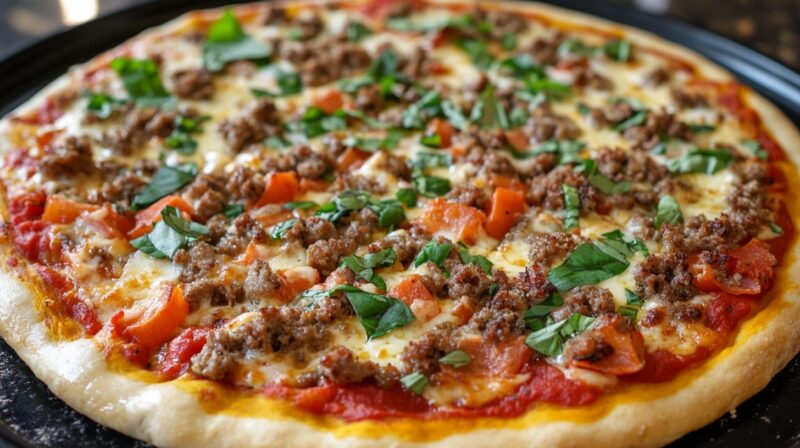
Toppings Ideas:
- Italian Salami, Apple, and Blue Cheese: Spicy salami, thinly sliced apples, and crumbled blue cheese.
- Prosciutto and Roasted Red Peppers: Prosciutto slices, roasted red peppers, and drizzled balsamic glaze.
- BBQ Chicken with Bacon and Onions: BBQ sauce, shredded chicken, crispy bacon, and onions.
Assembling:
- Preheat your oven to 500°F with a pizza stone inside.
- Roll out the dough on a floured surface to your desired thickness.
- Spread the pizza sauce evenly over the dough.
- Add your chosen toppings.
- Bake for 12-15 minutes until the crust is golden and the cheese is bubbly.
Crafting the Perfect Pizza Dough
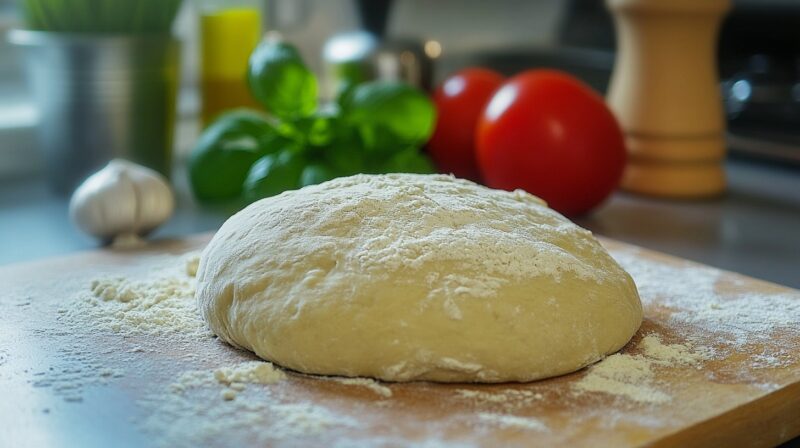
Creating the ideal pizza dough is the foundation for any delicious homemade gourmet pizza.
Important aspects include mastering the no-knead technique and understanding the benefits of using a stone and oven.
If it ends up undercooked, don’t worry—you can still salvage it!
Secrets of No-Knead Pizza Dough
No-knead pizza dough is simple and effective.
It involves mixing flour, water, salt, and yeast, then letting it sit for an extended period.
A long fermentation improves flavor and texture without requiring extensive kneading.
- Flour: About 3 1/2 cups. All-purpose or bread flour works.
- Water: 1 and 1/3 cups, room temperature.
- Salt: 2 teaspoons.
- Yeast: 1/4 teaspoon of active dry yeast.
You mix these ingredients in a large bowl until they form a rough dough.
Cover the bowl with plastic wrap and let it rise for 12-18 hours at room temperature.
After rising, the dough should be soft and bubbly. Use a bowl scraper to transfer it to a well-floured surface.
Divide it into smaller balls, let them rest for about 30 minutes, and you’re ready to shape your pizzas.
The Role of the Stone and Pizza Oven
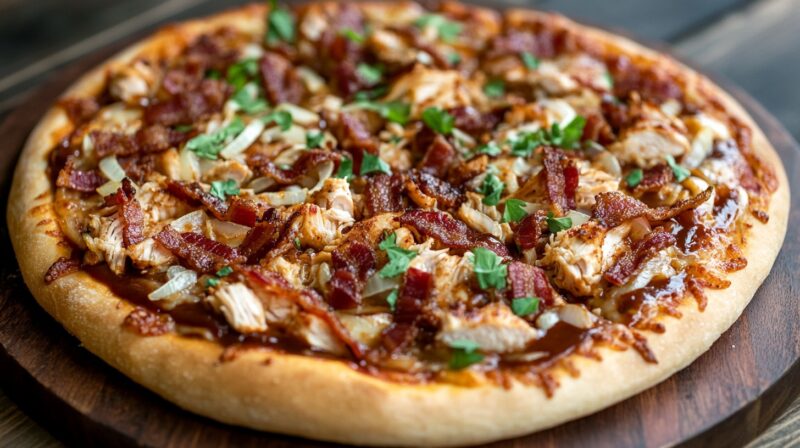
Using a pizza stone is crucial for achieving a crispy, evenly cooked crust.
Preheat your pizza stone in the oven at 500°F (260°C) for at least 30 minutes to ensure it’s hot.
A pizza stone mimics the floor of a pizza oven, absorbing moisture and providing even heat distribution.
It results in a crust that is crispy on the outside and tender on the inside.
When it’s time to bake, use a pizza peel to transfer your assembled pizza onto the hot stone.
The high heat from the stone helps to cook the dough quickly, giving it the desired texture and flavor.
If you have a pizza oven, it can reach even higher temperatures, around 900°F (482°C), which is ideal for cooking pizza in just a few minutes.
Take advantage of these tools, and your pizza crust will reach new levels of perfection.
Sauce and Cheese
Creating the perfect pizza starts with choosing the right sauce and cheese.
These key ingredients set the tone for your homemade gourmet pizza, ensuring every bite is packed with flavor.
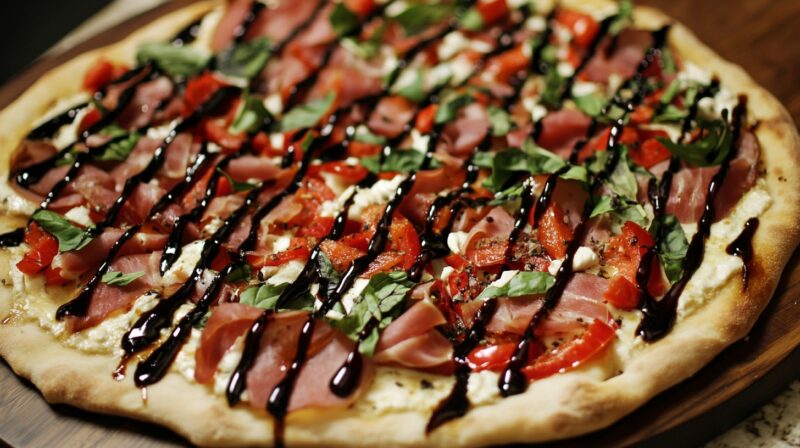
Varieties of Pizza Sauce
- Tomato Sauce: This is the classic base for most pizzas. Use fresh or canned tomatoes, blended with garlic, olive oil, and oregano.
- You can make your own homemade pizza sauce to customize the seasoning to your taste.
- Béchamel: For a creamy alternative, béchamel sauce provides a rich and smooth texture.
- It’s ideal for white pizzas and pairs well with toppings like spinach and chicken.
- Pesto: Made with basil, garlic, pine nuts, and Parmesan cheese, pesto sauce brings a fresh, herby flavor.
- It’s perfect for those looking for something different from traditional tomato-based sauces.
Selecting Cheese for Your Pizza
- Mozzarella: This is a staple for any pizza. Fresh mozzarella offers a superior melt and creamy texture, while shredded mozzarella provides convenience and even coverage.
- Parmesan Cheese: Adds a sharp, nutty flavor. It’s often sprinkled on top of mozzarella to enhance the taste.
- Gorgonzola: For a bold, tangy punch, gorgonzola pairs well with sweet toppings like figs and honey.
- Feta: Offers a crumbly texture and salty profile. It’s great for Mediterranean-inspired pizzas.
- Quattro Formaggi: A blend of four cheeses—mozzarella, Parmesan, gorgonzola, and ricotta—this combination brings a complex and rich flavor to your pizza.
- Choosing the right sauce and cheese combination can elevate your homemade pizza to gourmet levels. Experiment with these options to find your perfect pair.
Finishing Touches and Expert Baking Tips
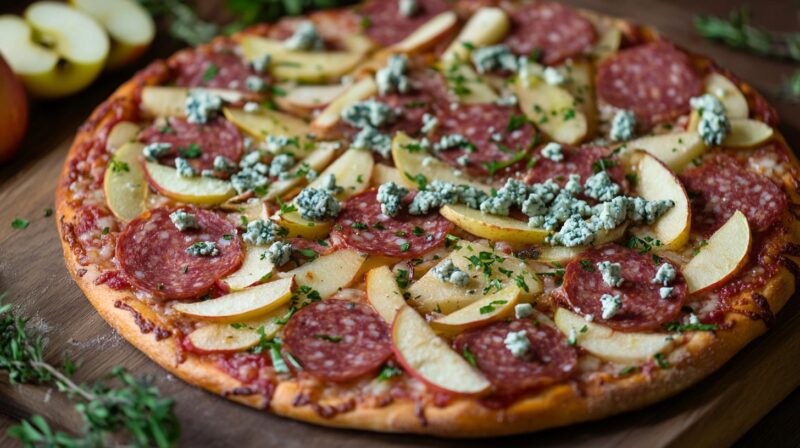
To make your homemade gourmet pizza truly special, you need the right herbs, spices, and baking techniques.
Herbs and spices can make a big difference in your pizza’s flavor. Fresh basil adds a sweet and slightly peppery taste.
Place it on the pizza right after baking for the best flavor. Oregano is a classic choice that pairs well with tomato sauces.
Fresh thyme and sage add earthiness and depth. You can sprinkle these sparingly before baking.
Fennel seeds give a subtle, sweet anise flavor and are great for sausage or meat-topped pizzas.
You might want to drizzle balsamic glaze or hot honey on a finished pizza for a unique twist.
Related Posts:
- Homemade Pizza Seasoning Mix - Elevate Your Pizza Flavor
- 1-Hour Pizza Dough Recipe: Quick and Easy Homemade Crust
- Delicious Homemade Pizza Recipe for Your Blackstone Griddle
- Homemade Stuffed Crust Pizza - Adding Cheese the Right Way
- Pizza Hut Vs Domino’s - Who Makes A Better Pizza…
- How to Make Watermelon Pizza - Summer Fruit Pizza Recipe

